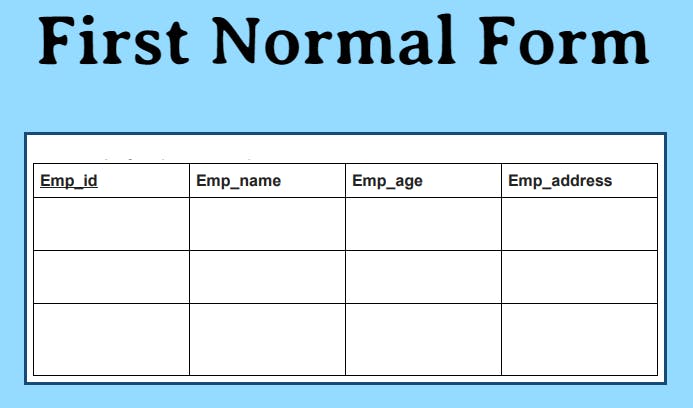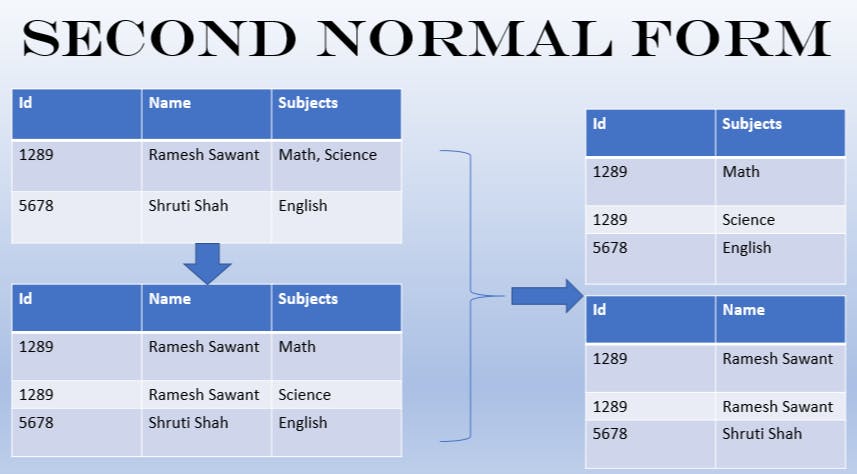Introduction:
I recently learned about normalization in SQL and It turns out to very useful and important thing. In the realm of relational databases, Structured Query Language (SQL) plays a vital role in managing and manipulating data. One of the fundamental principles that govern the design and organization of data within SQL databases is normalization. Normalization ensures that data is structured efficiently, minimizing redundancy, improving data integrity, and optimizing query performance. In this blog post, we will explore the concept of normalization, its various forms, and why it is crucial for database design.

Understanding Normalization: Normalization is a process of organizing data in a database to eliminate redundancy and anomalies. It involves breaking down a database into multiple tables and defining relationships between them. By doing so, we can reduce data duplication, enhance data integrity, and improve the efficiency of database operations.
The Forms of Normalization:
Normalization is typically divided into several normal forms, each building upon the previous one. Let's take a look at the most commonly used normal forms:
First Normal Form (1NF): 1NF ensures that each column in a table contains only atomic (indivisible) values. It eliminates repeating groups and ensures unique identification for each record by introducing a primary key.

Second Normal Form (2NF): 2NF builds upon 1NF and addresses the issue of partial dependencies. It requires that each non-key column in a table depends on the entire primary key, rather than just a part of it. This eliminates redundancy and potential data inconsistencies.

Third Normal Form (3NF): 3NF takes 2NF further by eliminating transitive dependencies. It ensures that non-key columns are dependent only on the primary key and not on other non-key columns. This reduces redundancy and minimizes the chances of data anomalies.

There are higher normal forms like Boyce-Codd Normal Form (BCNF), Fourth Normal Form (4NF), and Fifth Normal Form (5NF), which further refine the normalization process, but they are not as commonly used in practice.
Benefits of Normalization: Normalization offers several key benefits for database design:
Data Integrity: By eliminating redundancy and inconsistencies, normalization enhances data integrity. It ensures that data remains accurate and consistent throughout the database, reducing the chances of anomalies and errors.
Storage Efficiency: Normalization helps in minimizing data duplication. Storing data in separate tables allows for more efficient use of storage space, resulting in a smaller database size.
Query Performance: Well-normalized databases typically perform better when executing complex queries. With properly defined relationships between tables, the SQL engine can efficiently retrieve and join data, optimizing query execution time.
Flexibility and Scalability: Normalization provides a solid foundation for database scalability. As the database grows, it becomes easier to add new data without affecting the existing structure. The modular nature of normalized databases allows for easier maintenance and updates.
Considerations and Trade-offs: While normalization is generally beneficial, it is essential to strike a balance. Over-normalization can lead to increased complexity, requiring more intricate queries and potentially impacting performance. Additionally, in certain cases, denormalization may be necessary to optimize specific queries or improve performance in highly read-intensive applications.
Conclusion:
Normalization is a crucial concept in SQL database design. It provides a systematic approach to organize and structure data efficiently, improving data integrity, query performance, and storage efficiency. By adhering to the principles of normalization, database developers can create robust and scalable systems that effectively manage and manipulate data. However, it is equally important to strike a balance and make informed decisions about normalization levels based on specific requirements and performance considerations.